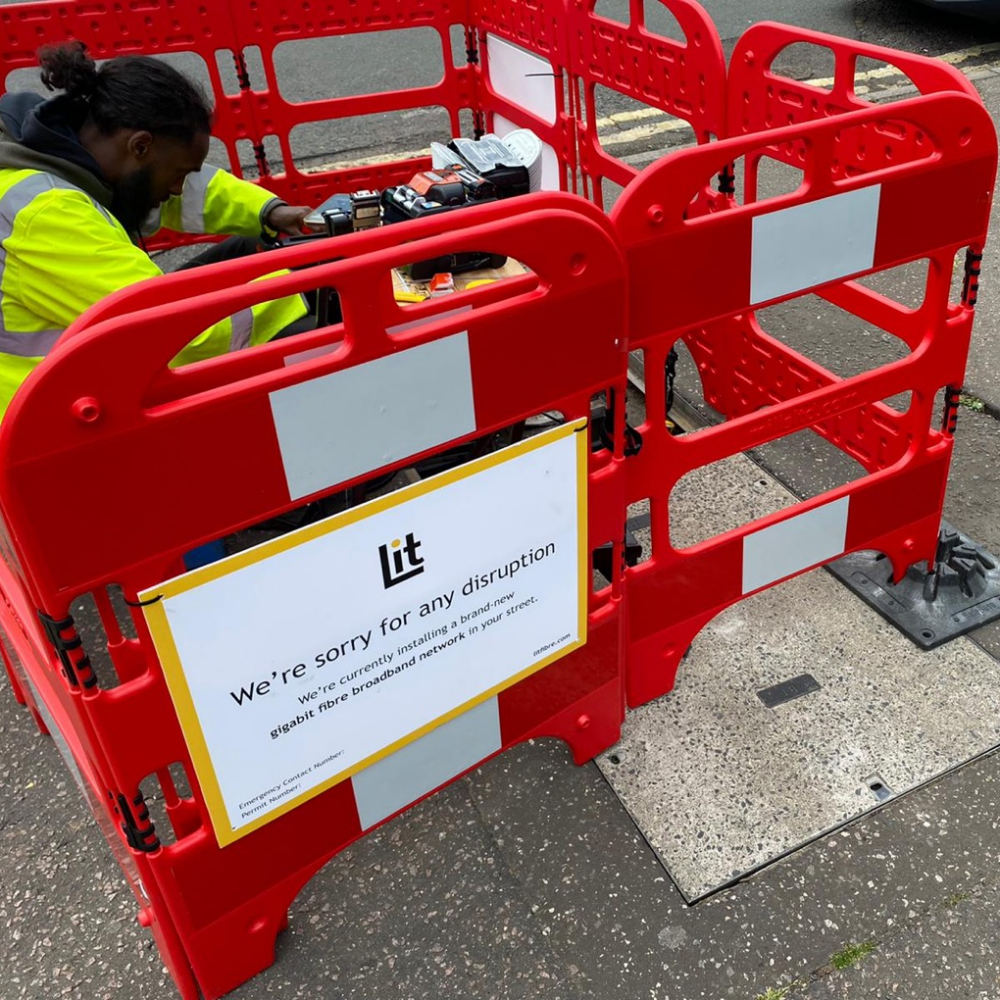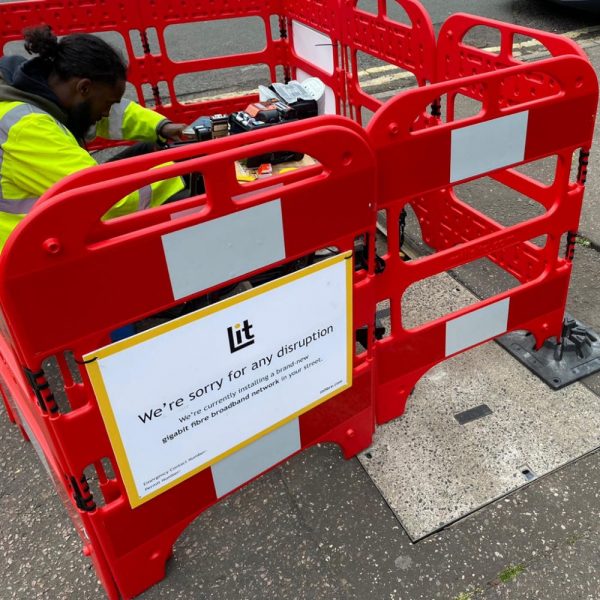John Henry Group Reveals the Obstacles to Building UK Fibre Optic Networks
3. Virgin Media has recently committed to ensure that over 2 million UK premises are reached by their network using ultrafast Fibre-to-the-Premise (FTTP) technology and BT have similarly pledged to cover 2 million premises (they’re also consulting on the possibility of doing 10 million premises).
On top of that we’re seeing a lot of similar deployments by smaller operators, such as Gigaclear, Hyperoptic, IFNL, Cityfibre and so forth. We’d assume this means more business for JHG, but do you think that rolling out FTTP/H/B is the right approach for the UK broadband market?
ANSWER:
John Henry Group has experienced considerable growth in the past two years, approximately 35% year on year. We are currently experiencing a vibrant and positive boom in the telecoms market and more and more people expect better connectivity with smart devices like phones and tablets. Also, people’s homes are also becoming more intelligent, so the introduction of products like the Amazon Echo and smart electronics, fridges and thermostats, also require bandwidth – therefore, as the public’s appetite for these technologies continues to grow, so will the demand for bandwidth.The only real future proof solution is a giga-bit connection that can be provided by fibre to the premises (home or business) ‘Ultrafast’ network. Whilst 96% of the UK is already receiving ‘Superfast’ hybrid fibre/copper (or similar) networks, these networks do still have limitations, especially if a household wants to enjoy access to high-definition streaming. As the devices that provide these services also become more affordable, this will increase the strain on the final third of the copper network (into the home/premises).
John Henry Group has been working to deliver ‘pure’ fibre networks with a range of growing alternative network providers as well as major providers like Virgin Media on its Project Lightning build. Also we have recently made advances to open a specialist ‘Alt-Net’ division to work with and advise growing/start-up ISPs of the best way commercially to realise the delivery of FTTP as a result of this market boom.
4. As the roll-out of fibre optic broadband progresses we’re starting to hear more about the sometimes negative impact of fixed penalty notices (FPN) and related enforcement by local authorities. What kind of experiences has JHG had with FPNs and how would you improve the situation?
ANSWER:
Most FPNs we receive are for late registration of works and signing and guarding issues on the site. There is a difference of interpretation of the legislation depending on where we work in the UK. This in turn can also dictate where an ISP may choose to grow its network which can be a negative impact for some communities.We have sought to improve this with the introduction of a digital tool called Geo-sight, which allows us to remotely monitor works with a smartphone app. Teams record all of their movements in picture format with the app and then submit the images to a special head office cloud, which can be accessed by senior managers, HSEQ and other operations staff. Alerts can also be set up to ensure that sites are compliant, so that any issues can be corrected immediately with advice from head office issued if needed.
Geo-sight allows us to prove that we have left our site compliant, so that we can combat any controversial FPNs, whilst introducing better working practices through the process of recording our works with remote/app technologies.
5. The Government has recently moved to revise the Electronic Communications Code (ECC) so as to help simplify wayleave agreements and make it cheaper / easier to build new telecoms infrastructure on private land. What are your thoughts on the changes (e.g. do they go far enough?) and what kind of impact might they have on JHG?
ANSWER:
Wayleaves have always been a problem in the UK. Sometimes we have constructed in the highway to the private land boundary and have had to wait months for the granting of a wayleave in order to connect a tenant/business on behalf of the ISP. Anything that improves this situation will be welcome.
6. Speaking of FPNs and Wayleaves, the Broadband Stakeholders Group (BSG) and Analysys Mason have jointly published a new report that highlights a large number of ways in which the civil engineering cost of deploying new fibre optic broadband networks could be further reduced (here).
In your opinion, what does this report get right and what do you think it got wrong or could have improved upon?
ANSWER:
The report was extremely welcome and certainly covers some of the problems facing network construction in the UK todayGETS RIGHT
We agree with the Analysis Mason report that early engagement is essential with all parties. When all stakeholders are aware of the working schedules and agendas, we would agree that they run extremely smoothly. This should also extend to ongoing site communications, such as public relations planning and residential communication. Our public relations team is currently working on a strategy to ensure communications with members of the public is maximised throughout the build process.
We also agree that the current noticing and permitting schemes do not lend well to network construction and a review would be very welcome.
IMPROVED UPON
The report could be improved upon by having greater discussion on alternative reinstatement materials not just when referring to Section 58 Restriction notices, but for everyday use in installing FTTH networks. The alternative materials could be performance based and may improve the buildability of networks.
7. We tend to see a lot of reports about contractors for telecoms and broadband companies causing problems for local authorities through “defective” or unsafe street works, which are obviously increasing as the level of network building intensifies.
No doubt JHG has had to deal with a few problems like this too. What must such contractors do to reduce their occurrence and do you feel that JHG itself needs to make any improvements?
ANSWER:
We have had to think innovatively to improve the way we supervise and monitor the success of street works. Success in street works comes in many guises. Obviously the objective is to deliver a network for our clients but we also need to ensure we are doing this safely and working in conjunction with members of the public and local and in some cases, national organisations and authorities.We have developed new technologies and techniques to ensure that we can build networks quicker which means we are effectively ‘out of the way’ of members of the public quicker than our competitors but we also have had to think about defect monitoring and how the end product (the network) is completed to a satisfactory standard in the eyes of the client and the local authority for example. To do this, we have developed Geo-sight which allows us to take pictures and evidence complete and satisfactory works for our clients and local authorities. We are also able to use this technology to evidentially ‘mitigate’ against unfair defect fines using photo capture.
Taking this a step further, we have also developed a progressive initiative called Inmystreet.info, which is a search Engine that allows members of the public and other stakeholders in the project to find out exactly what works are going on outside their homes or businesses by scanning a special QR code on special courtesy boards we have developed. The user inputs their street name and can find the schedule of works. They can even sign up to the service as it’s being built. We hope this will be a powerful tool in the communication process with members of the public.
Training is vital. The amount of network build over the coming months for all civils contractors cannot be undertaken by existing resources. Training centres with approved accreditations need to be formed specifically for FTTH construction in the UK. There simply isn’t the quality resource available to realise the ambitions of all ISPs at the present time.
We’re investing heavily in a new integrated training operation which combines many advancements of video technology, in house training agendas and an app based system which will allow us to ‘push’ training content out into the field, ensuring training and resource material is readily accessible in both digital and printed format to help our personnel develop or continue to operate to high standards of safety and quality expected by both our clients and the official industry bodies and organisations.
8. In terms of physically deploying new fibre optic broadband networks, over the past few years what advances on the civil engineering side have helped the most with related roll-outs (i.e. improved the timescale and cost efficiencies etc.) and why?
ANSWER:
John Henry Group has developed a narrow trenching solution which has provided significant savings on a civils infrastructure build in a bituminous (asphalt) pavement. The technique was developed in Cambridge at our head office. Because of the speed of the build, from a PR perspective, it reduces the disruption of street works on people and businesses in the area in which we are building the network. The environmental impact is also much lower due to material reduction on the trench backfill and the reduced vehicle movements associated during the construction process. Effectively, it means John Henry Group offers ISPs the fastest, most cost-effective compliant network build solution in the market.Alternatively, advancements in micro trenching look promising. If we look abroad, we see the use of alternative techniques and plant/machinery which would help with the roll-outs, achieving both significant commercial return and a quicker construction solution and we are actively engaged with many new equipment manufacturers and partner companies abroad to explore these latest technologies.
These methods such as micro trenching and alternative reinstatement materials are yet to be fully deployed in the UK, and legislation may not allow, but there is no doubt they would help the roll out of future and next gen networks. This is partly due to the nervousness of using materials or processes not defined in the current NRSWA 91 SROH (The Specification for Reinstatement of Openings in the Highway).
There is an SROH Appendix 9 Trial Approval process to gain alternative materials acceptance, however it can prove a lengthy process. Highway Authorities quite rightly want to ensure that the techniques and products used in our highways are fit for purpose, but the use of such would help the roll-out of future and ‘next gen’ networks.
9. If you ran the government, what other regulatory / law changes would you introduce in order to make it easier and quicker for civil engineering teams to deploy new broadband and mobile infrastructure?
ANSWER:
Noticing and permit scheme changes – Attempting to construct large residential based networks using today’s current noticing and permit schemes is problematic. The amount of detail and timing required to notice these builds can be complicated. A simplification of the process in this area would be very welcome.Alternative reinstatement materials – Better promotion and simpler legislation for the use of alternative reinstatement materials that are performance based rather than traditional. These materials may well allow industry to de-skill some of the current civil engineering practices allowing a greater labour pool to be drawn upon.
10. Over the years we’ve seen various comical examples where the deployment of new fibre optic infrastructure has been disrupted by unusual problems with animals or nature. Have JHG faced any similarly unusual or awkward challenges and which ones were the most memorable (please include some pictures if possible)?
ANSWER:
Interestingly, a few years ago we were undertaking civils works in Madingley near Cambridge. Our engineers were on site surveying ahead of works and we noticed a ‘half pipe’ embedded into the ground which did not show up on any utility drawings.Unbeknown to us, this was a new design for a toad crossing – a type of pipe which stops the toads crossing the road to reach the water on the other side of the road! Naturally, we had to be careful installing cables around the barriers in case any animals were harmed or the crossing ‘barriers’ were damaged.
11. Finally, are there any other practical advances in civil engineering on the horizon that might help to both speed up and / or bring down the cost of rolling out new telecoms infrastructure?
ANSWER:
Although directional drilling is not new in the UK, there are some exciting advances in technology out there. It’s a tried and tested method and we have worked to deliver a variety of directional drilling schemes across the UK, varying from small streams, to large rivers – live the River Orwell in Suffolk.John Henry Group has its own directional drilling equipment and we’ve recently been using it to drill cables under main roads/rivers/rail crossings. Most commonly, it is widely used in the USA where there is more room to manoeuvre the equipment.
Smaller rigs are being developed and may prove extremely cost effective and less disruptive in installing micro ducts for FTTH. As with many other innovations, we are exploring new ways to bring this equipment over to the UK to trial with a view to exploring how it can minimise disruption and provide greater commercial impact for our clients.
ISPreview.co.uk would just like to send a big THANK YOU to Mark Heraghty for being kind enough to engage with our interview.
Mark is a professional technology writer, IT consultant and computer engineer from Dorset (England), he also founded ISPreview in 1999 and enjoys analysing the latest telecoms and broadband developments. Find me on X (Twitter), Mastodon, Facebook and Linkedin.
« Openreach to Test XdB Speed Boost on ECI FTTC “Fibre Broadband” Lines
Latest UK ISP News
- FTTP (5574)
- BT (3526)
- Politics (2549)
- Openreach (2308)
- Business (2280)
- Building Digital UK (2250)
- FTTC (2049)
- Mobile Broadband (1987)
- Statistics (1796)
- 4G (1676)
- Virgin Media (1636)
- Ofcom Regulation (1472)
- Fibre Optic (1405)
- Wireless Internet (1399)
- FTTH (1382)





















































Comments are closed